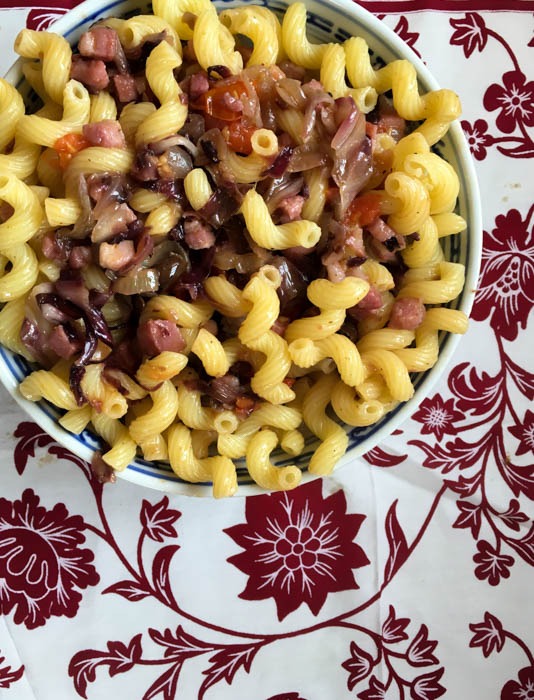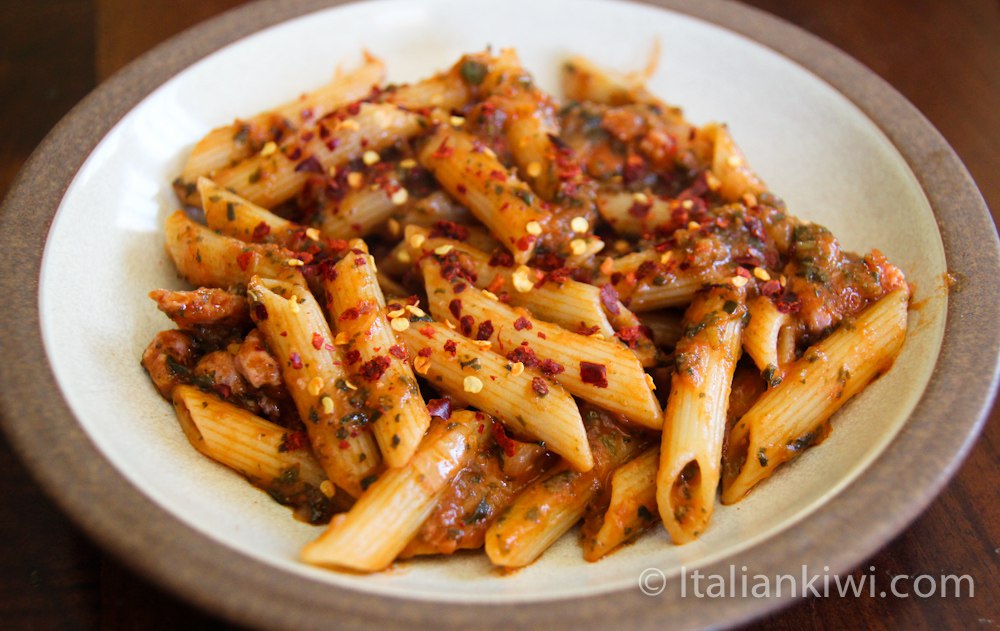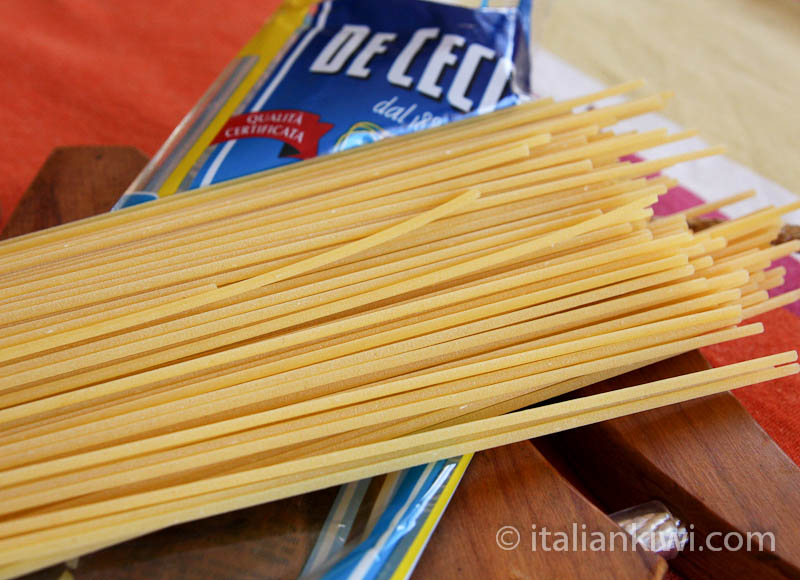How to cook dried pasta
Everyone knows how to cook dried pasta from a packet, right? I don’t mean making it from scratch. I really mean boiling dried pasta. You may be very surprised to learn that it’s a lot more complicated than you think. You would think that nothing could be more simple, but let me tell you, if any of you have an Italian in your life, you will know more than you want to about what could go wrong! Italians, in general, are VERY touchy about their pasta. You just try approaching within 10 metres of a pot of boiling water with some oil “to stop the pasta from sticking together” and you’ll probably be banned for life from the kitchen by an irate Italian. I remember one legendary evening camping with french friends in which the entire evening was spent “educating” them on how to cook pasta properly. Amazingly, they say they are still our friends, though they’ve now chosen to live on the other side of the world from us………hmmmmmm…..
Rules for making dried pasta
Do not panic though. If you follow a few simple rules, your pasta will turn out just as good as any that graces tables all over Italy.
- The going rate when you eat pasta as a main dish is 100 g (3.5oz) of dried pasta for each person, or 70 g (2.5oz) if it is going to be served as a first course.
- Choose a big pot and put LOTS of water in it. I use a 10 L (2 1/2 gallon) pot when making pasta for 4 or more people. I fill it up with approximately 5 L (1 1/2 gallons) of water.
- Bring the water to a rolling boil and then add approximately 40 g (1.4 oz) of large-grained salt. How much you add will depend on your personal taste.
- Weigh the pasta, then add it to the boiling water. Let the water come to a boil again, and then time the cooking according to the packet instructions, stirring every 2-3 minutes so that it doesn’t stick together. I usually set the timer to go off one minute early and start tasting it from then. We like pasta to be quite al dente at our place.
- Make sure the sauce is ready when the pasta has finished cooking so that you can mix it in immediately after draining the pasta.
- Drain the pasta then add the sauce of your choosing IMMEDIATELY and stir it in. If you don’t do this, the pasta will stick together and become a solid lump of starch, and we sure don’t want that to happen. 🙂
What never to do when cooking dried pasta
So here are the list of things you should never do when making pasta:
- Never put the pasta in cold water,
- Never use a small pot,
- Never add oil to the water,
- Never leave half the pasta sticking out of the water while it is cooking,
- Never serve the sauce on the side or plonked on top. Mix it in immediately with the pasta, otherwise the pasta will become all gluey and sticky.
Choose your brand of pasta very carefully
The brand of dried pasta you use is also very important. It should be a good quality one. I use mainly De Cecco pasta, which can be found in many different countries. Lower quality pasta generally doesn’t cook very evenly, or becomes soggy and squishy before the end of the cooking process.
How to eat pasta
You thought that there were enough rules for the cooking of pasta? There are a few more dos and don’ts for the eating of it too. This is another area that Italians can often be very serious about.
- You will NEVER find pasta in Italy made as a side. Please try not to serve it like this to an Italian, otherwise you will be brought up in future dinner conversations (not in a good way!) for the rest of their lives.
- If you want to pretend to really be Italian, do not use a spoon to help you wind spaghetti onto your fork. Use the side of your plate to help you. Don’t worry if you make a mess. You’ll get better with practice!
- Never, but N.E.V.E.R., put Parmesan cheese on a pasta dish with fish in it. I have a non-Italian friend who tried to do that once in Italy and nearly got thrown out of her Italian friend’s house.
- Italians generally do not use chicken in their pasta sauces.
- If you make a spicy pasta sauce, you should not grate cheese over the top of it.
- The pasta shape should pair well with the sauce you eat it with. Long pasta, such as spaghetti, is often eaten with seafood. Short pasta, such as penne and fusilli, tend to be eaten with tomato-based sauces.
The Italians take their pasta very seriously indeed. Once you start following the rules to help you cook pasta like an Italian, you will start to understand why.
Now that you have discovered the secrets of making perfect pasta, try out your skills on one of these pasta recipes!
Buon appetito!!
By Lisa Watson




